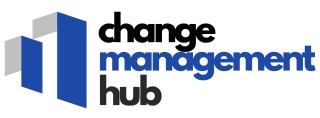
The Concept of Locus of Control
Exploring the Locus of Control Theory
The concept of locus of control is a cornerstone in psychology, particularly when it comes to understanding how individuals perceive their ability to influence events in their lives. This theory, developed by Julian B. Rotter in the 1950s, is pivotal in change management as it helps explain how people react to change and how they can be motivated to embrace it.
Locus of control is divided into two main categories: internal and external. An internal locus of control suggests that individuals believe they have control over their life events and outcomes. They attribute success to their own efforts and abilities. On the other hand, an external locus of control indicates that individuals feel their lives are controlled by external factors, such as fate, luck, or other people’s actions.
Understanding these dynamics is crucial in business environments where change is constant. For instance, individuals with an internal locus of control are often more proactive in decision making and exhibit higher job satisfaction. They tend to take responsibility for their actions, which can be a significant asset in change management strategies.
Conversely, those with an external locus of control might face challenges in adapting to change, as they may feel powerless in influencing outcomes. However, this perspective also presents opportunities for organizations to design interventions that can shift perceptions and enhance efficacy in change management processes.
Incorporating these insights into your change management strategies can lead to more effective outcomes. Whether you're designing a powerpoint presentation or a google slides deck, understanding the locus of control can help tailor your message to resonate with your audience, ensuring that both internal and external factors are considered in your approach.
Internal Locus of Control: Empowerment and Responsibility
Empowering Individuals through Internal Locus
In the realm of change management, understanding how to harness the power of those with an internal locus of control can significantly bolster team efforts. Individuals who exhibit an internal control mindset tend to believe they have control over their own behavior and decisions. This inherent belief can drive strong motivation, decision making, and job satisfaction.
Such persons are often seen as self-starters within any control system. They possess a heightened sense of responsibility and empowerment, which allows them to take charge of situations and contribute meaningfully to projects. As a result, they may frequently take the lead in initiatives and provide the necessary efficacy to see it through to completion.
- They are often linked with increased motivation and higher job performance.
- Internal locus individuals adjust well to new challenges as they see themselves as the primary agents of change.
- They have tendencies toward strong social skills, which help them navigate team dynamics effectively.
The psychology behind this locus trait emphasizes self-sufficiency. However, managing this dynamic is crucial. Effective ppt presentations and slides in business settings can be crafted to highlight the attributes of internal control, promoting wider adoption of these positive traits throughout teams. For a deeper insight into fostering a culture that supports an internal locus, consider exploring this resource.
External Locus of Control: Challenges and Opportunities
Exploring Challenges and Opportunities for External Locus of Control
In understanding the psychology behind an external locus of control, it is essential to recognize that individuals with this perspective often attribute their outcomes to external factors rather than their own actions. This perception can be challenging in a change management context. Individuals with a strong external locus may feel disconnected from the results of their efforts, potentially leading to decreased motivation, job satisfaction, and overall efficacy in their roles. However, there are opportunities within this mindset that can be harnessed. For instance, when external factors in the business environment are perceived as favorable, individuals might feel a greater level of motivation and engagement, much like the positive effects of social reinforcement. This motivates them to ride the wave of circumstance, enhancing their performance potential. Moreover, understanding external control in the team dynamic requires a strategic approach. Change leaders can create systems and processes that provide clearer pathways for individuals to align their actions with business objectives. With targeted training, even a person with a strong external focus can learn to utilize external cues effectively. Leaders can design PowerPoint presentations or Google Slides decks highlighting successful case studies that illustrate how such individuals can thrive. By integrating external locus control examples into a PowerPoint presentation, managers can demonstrate how past challenges were managed. This clarity reassures individuals, fostering an environment where they can play an active role in decision-making processes and adapt to change. Managers can download free templates or slides tailored to illustrate how focusing on external factors can be transformed from a perceived disadvantage into a comparative advantage. To delve deeper into creating effective change management strategies, understanding both internal and external control dynamics is imperative. By acknowledging the complexities and potential of an external locus, organizations can design frameworks that encourage active participation and resilience against external disruptions. As a starting point for designing and implementing these strategies, you might explore the power of talent mapping to align individuals' perceptions with the overarching goals of change initiatives.Balancing Internal and External Locus of Control in Teams
Striking a Balance for Effective Teams
Finding the right equilibrium between internal and external locus of control is critical when managing change within teams. In the context of business environments, individuals in a team often display varying degrees of internal and external locus control. This diversity can present challenges but also offers significant opportunities for growth and innovation when harnessed correctly.
Having a mix of internal and external control mindsets enables a team to be resilient and adaptable. Individuals with a strong internal locus might drive forward with unwavering motivation, assuming responsibility and taking the initiative. In contrast, those with an external locus might be more sensitive to external factors, which can be beneficial in recognizing market trends and responding to feedback from stakeholders.
To effectively manage change, it's essential for leaders to recognize these differences in locus control among team members. By understanding this dynamic, leaders can leverage it to enhance job satisfaction and decision-making processes. Here are a few strategies:
- Promote Mutual Understanding: Encourage team members to appreciate diverse perspectives stemming from different locus orientations. This fosters psychological safety and collaborative behavior.
- Align Goals with Locus Types: Design tasks that cater to both internal and external control traits. For instance, those with an internal locus can be engaged in activities that require high autonomy, while those with external locus can excel in roles that demand interaction with external entities.
- Utilize Balanced Feedback Mechanisms: Develop a control system that integrates feedback from both internal evaluations and external assessments, ensuring comprehensive growth and learning.
Implementing these strategies can be effectively presented in your business presentations using PowerPoint or Google Slides. A well-designed ppt presentation can illustrate these concepts, bringing clarity to a complex theory of psychology in change management.
Practical Applications: Designing Effective Change Management Strategies
Integrating Locus of Control into Change Management Strategies
Designing effective change management strategies requires a nuanced understanding of the locus of control theory. This psychological concept can significantly influence how individuals and teams respond to change within a business environment. By acknowledging both internal and external loci of control, organizations can tailor their approaches to enhance motivation and job satisfaction.
Utilizing Internal Locus of Control for Empowerment
Individuals with a strong internal locus of control believe they have the power to influence outcomes through their actions. In change management, leveraging this belief can lead to increased efficacy and proactive behavior. Encouraging employees to take ownership of change initiatives can foster a sense of responsibility and empowerment. This can be achieved through:
- Providing opportunities for decision making and leadership roles.
- Offering training and development programs to enhance skills.
- Recognizing and rewarding individual contributions to change efforts.
Addressing External Locus of Control Challenges
Conversely, individuals with an external locus of control may attribute changes to external factors beyond their control. This can lead to resistance or disengagement. To address these challenges, change management strategies should focus on:
- Communicating the rationale behind changes clearly and transparently.
- Providing support systems, such as mentoring or counseling, to help individuals adapt.
- Incorporating feedback mechanisms to involve employees in the change process.
Creating a Balanced Approach
A balanced approach that considers both internal and external control systems can enhance the effectiveness of change management strategies. By understanding the diverse perspectives within a team, leaders can design interventions that cater to varying needs and motivations. This holistic approach can be visualized and communicated effectively through tools like PowerPoint presentations or Google Slides, which can be downloaded free or customized to fit the organization's context.
Practical Tools for Implementation
To facilitate the integration of locus of control concepts into change management, organizations can utilize various tools and resources. Creating a comprehensive slide deck or PDF presentation that outlines the theory and its applications can serve as a valuable resource for training and development. This can include:
- Examples of internal and external control scenarios within the organization.
- Case studies highlighting successful change initiatives.
- Interactive elements to engage participants and encourage discussion.
By strategically applying the principles of locus of control, businesses can enhance their change management efforts, leading to improved outcomes and a more resilient organizational culture.
Creating a Slides Template for Locus of Control in Change Management
Crafting a Compelling PowerPoint Presentation for Locus of Control in Change Management
Creating a well-structured PowerPoint presentation is paramount when conveying the nuanced concepts of locus of control in change management. This will not only help in clarifying the psychology behind internal and external control but also improve the efficacy of change initiatives within organizations. To begin with, it's essential to have a clear understanding of both internal and external locus systems as they apply in a business context. By incorporating relevant theory in your slides, you can guide individuals on how these ideas influence decision-making and job satisfaction. Here's how you can design your slides:- Introduction Slide: Start with a brief overview of the locus of control, summarizing its importance in influencing an individual's behavior and motivation during change processes.
- Internal Locus of Control Slide: Illustrate empowerment and responsibility. Highlight how individuals with internal control are more likely to feel empowered and responsible, affecting their social interactions and business decisions.
- External Locus of Control Slide: Discuss the challenges and opportunities that stem from external factors. Acknowledge the role of external control in shaping mental health and efficacy in professional settings.
- Balancing Control Slide: Use this section to demonstrate strategies for teams to balance internal and external loci of control. Consider including examples from successful change management strategies.
- Practical Applications Slide: Focus on designing effective change management strategies using internal-external control insights. Highlight real-world applications that showcase the benefits of this approach.
- Conclusion Slide: Summarize the key points and encourage action by providing a downloadable PDF version of the presentation for audience reference.













